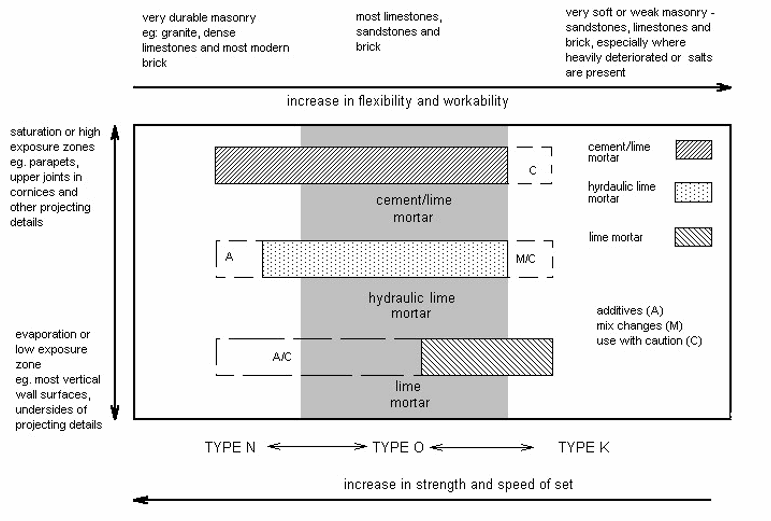G.T. Suter1, C.P. Borgal2, and K. Blades3
- Principal, Suter Consultants Inc., Nepean, Ontario. sutergr@istar.ca
- Senior Conservation Specialist, Morrison Hershfield, Ottawa, Ontario. cborgal@morrisonhershfield.com
- Principal, Keith Blades Consultant in the Conservation of Historic Buildings Inc., Almonte, Ont. kblades@comnet.ca
ABSTRACT
Mortar for historic structures must comply with good conservation principles and be compatible with the historic fabric as far as feasible; it must also be appropriate for the material to be bonded and its service conditions. Good conservation principles dictate that mortar be not too strong and be the sacrificial material rather than the masonry unit.
In Canada, three types of mortar are currently being used for historic masonry projects; these types are lime mortars, hydraulic lime mortars, and Portland cement/masonry cement – lime based mortars.
These types of mortar can differ significantly in their properties in both the plastic and hardened states with perhaps the greatest differences pertaining to compressive strength, flexibility, water and vapour transmission rate, and frost durability. The paper provides an overview of the three types of mortar to help the conservation specialist in the selection of the most appropriate mortar mix for a historic masonry project.
KEYWORDS
Mortars, historic structures, lime, hydraulic lime, cement.
MORTAR09



